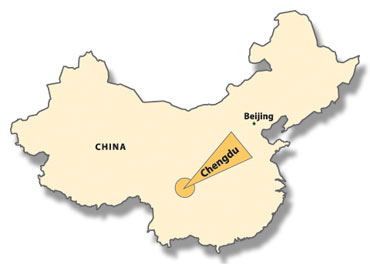Veterinary alliance unites Chinese, UK, US stakeholders
 An international consortium of veterinary schools in the U.S. and U.K., together with industry, has established an outreach program in China to promote education and research.
An international consortium of veterinary schools in the U.S. and U.K., together with industry, has established an outreach program in China to promote education and research.
The International Veterinary Consortium for China, established in 2010, comprises the University of Nottingham School of Veterinary Medicine and Science, the Royal Veterinary College in London, and U.S. veterinary schools and colleges at four universities— the University of California-Davis, Iowa State University, Kansas State University, and the University of Minnesota—together with Pfizer Animal Health.
The group aims to advance the efficiency and quality of livestock production, promote standards in veterinary education, facilitate on-farm training programs with immediate impact, raise awareness of veterinary public health and food safety, and enhance veterinary care for companion animals in China through cooperation with partner institutes in that country.
In the next few years, the consortium will introduce outreach activities in dairy and pig health in addition to postgraduate opportunities and training in veterinary public health.
Activities in the latter subject are being led by Nottingham with help from the RVC and Minnesota. These veterinary institutions are working to develop an international training center for veterinary public health in China as part of the consortium's program. This project will involve key veterinary institutions there, such as the China Agricultural University and the Chinese Academy of Agricultural Sciences, both located in Beijing. Nottingham University has a campus at Ningbo, near Shanghai, which will facilitate these activities through its involvement in the global food security activity theme within the university.
As a preliminary activity to promote the VPH brief, the consortium held two symposia this year. The first, titled "International symposium on major emergent animal diseases, public health, and food safety," took place Oct. 23-25 in Chengdu, Sichuan Province, as part of the Chinese Association of Animal Science and Veterinary Medicine conference.
It touched on major recent research in infectious diseases of food animals, current epidemiologic methods and disease surveillance, prevention and control of diseases in the food chain, and food safety and the environment. The symposium was structured around four sessions, with each having at least one prominent Chinese veterinarian-researcher on hand to address key needs for further research and collaboration in his or her field of expertise.
Also incorporated into the program were breakout sessions to enhance information exchange and identify high-priority needs in China and internationally. Among the issues discussed were major problems related to food safety, integration of Chinese scientists with existing scientific networks, determination of veterinarians' role in public health and food safety, training and education needs, and perceived research gaps.
The symposium featured speakers from Europe, the U.S., China, and Thailand and representatives from the Food and Agriculture Organization, the World Organisation for Animal Health (OIE), and the European Food Safety Authority.
A similar, second meeting was held Oct. 26-27, also in Chengdu, titled "International symposium on new approaches to animal diseases, food safety and public health for the 21st century." The aim was to explore the market for improving postgraduate and undergraduate training in veterinary public health in China as well as expose young scientists to new technologies and approaches to veterinary science.